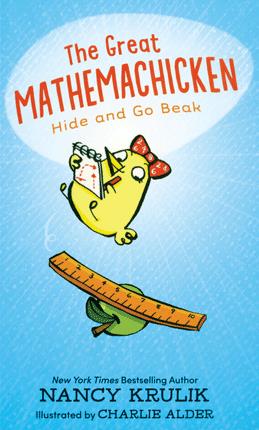| Hide and go beak (Great Mathemachicken) Author: Krulik, Nancy E. | ||
| Price: $19.08 | ||
Summary:
A chicken hops a ride to school to see what the humans do there all day and unlocks the superpowers of math and science, which she uses to save the coop.
| Illustrator: | Alder, Charlie |
Reviews:
School Library Journal (01/01/22)
Full Text Reviews:
School Library Journal - 01/01/2022 K-Gr 3—A curious young chick named Chirpy sneaks into school, where she learns about simple machines and counting strategies. When a fox threatens her community, Chirpy employs her newfound STEM skills to design a gentle trap using playground equipment including a swing, slide, and seesaw. She cajoles her reluctant chicken friends and family to join the effort. Told in 11 short chapters, the mostly one- and two-syllable word vocabulary includes some pithy one-liners with terms like "eggs-ploding" and "peck-uliar." Cartoon drawings in black, white, and yellow provide visual clues that help readers interpret the text, with brush strokes conveying a range of character emotions. A number of topics are touched on including gravity, force, and skip counting. Chirpy's invention demonstrates how simple machines can be used to create more complex ones; in this case a trap to catch a fox, who looks more like a house cat than a fierce predator. An engaging full-spread diagram complete with arrows shows how the trap works, but it does leave some aspects unexplained. Labeling each playground item by function (pendulum, inclined plane, or lever) would have clarified and reinforced key concepts. End pages include instructions on how to build a rudimentary wheel-and-axle toy with adult assistance. VERDICT This STEM series debut for newly independent readers provides a light but engaging look at simple machines. For more detail, pair with David A. Adler's Simple Machines: Wheels, Levers, and Pulleys, or D.J. Ward's Simple Machines.—Jenny Andrus - Copyright 2022 Publishers Weekly, Library Journal and/or School Library Journal used with permission.



